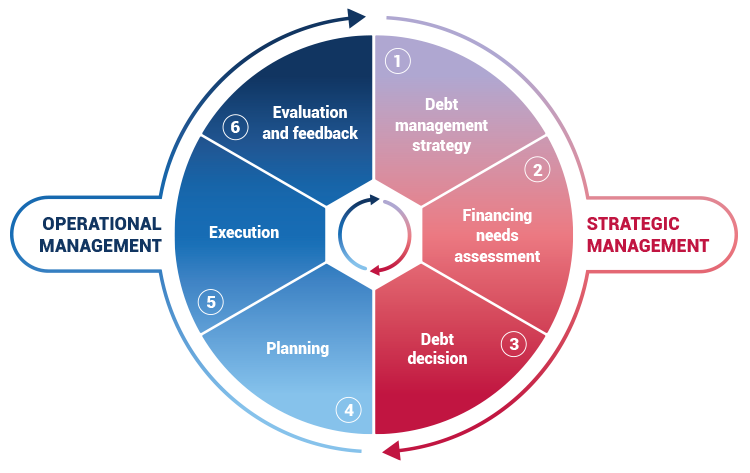Exactly How Financial Obligation Debt Consolidation Can Streamline Your Financial Life: More Discussion Posted Here
Exactly How Financial Obligation Debt Consolidation Can Streamline Your Financial Life: More Discussion Posted Here
Blog Article
Whatever You Required to Understand About Producing an Individualized Debt Monitoring Plan
In the realm of personal money, designing a customized debt management plan is often the cornerstone of attaining financial security and assurance. By diligently assessing your existing economic responsibilities, setting achievable monetary objectives, and crafting a useful budget plan, you lead the means for reliable financial debt payment methods. However, the trip to financial flexibility is not exclusively regarding initial planning; it additionally calls for ongoing surveillance and modifications to ensure ongoing progress. As you navigate the complexities of creating a personalized financial obligation monitoring plan, recognizing the ins and outs of each step is essential to your financial success.
Assessing Your Current Financial Obligation Situation
One must first conduct a detailed examination of their existing debt responsibilities before creating a reliable financial debt management strategy. Create a thorough list of each debt, including the total amount owed, interest rates, minimum month-to-month settlements, and due dates.
After compiling this info, calculate your complete debt-to-income ratio by splitting your regular monthly debt repayments by your monthly earnings. Understanding these elements of your economic scenario will direct you in developing a personalized debt administration plan customized to your details requirements and goals.
Setting Financial Goals and Targets

When establishing monetary goals, it is necessary to be specific, measurable, achievable, appropriate, and time-bound (CLEVER) For example, you might set an objective to pay off a specific quantity of debt within a specific timespan, such as reducing your debt card balance by $5,000 in the next one year - More Discussion Posted Here. By setting clear targets such as this, you can track your progression and remain inspired to attain your financial debt administration goals
Additionally, think about prioritizing your financial obligations based on elements such as rate of interest prices, outstanding balances, and payment terms. By concentrating on high-interest debts first, you can conserve cash in the future and accelerate your trip towards financial flexibility. Remember, each person's economic scenario is one-of-a-kind, so tailor your goals and targets to fit your specific needs and conditions.
Creating a Realistic Budget
Crafting a distinct budget plan is a fundamental action in effective debt administration and monetary preparation. A reasonable spending plan acts as a roadmap for your monetary health and wellness, helping you track your earnings, expenses, and debt payments. To create a practical spending plan, begin by detailing all your income sources. This includes your salary, side rush profits, or any other monetary inflows. Next off, magazine all your repaired costs such as rent or mortgage, energies, insurance policy, and car loan repayments. Variable expenditures like grocery stores, home entertainment, and transport needs to likewise be included. Differentiate between wants and needs to prioritize essential costs and recognize locations where you can reduce.
Routinely testimonial and readjust your spending plan as needed to stay on track with your financial objectives and financial debt repayment plan. By sticking to a realistic spending plan, you can efficiently handle your financial debt and work in the direction of a much more secure financial future.
Exploring Financial Obligation Payment Techniques
After developing a practical spending plan, the next crucial action in effective financial debt monitoring is to explore various financial obligation payment techniques. One usual strategy is the snowball approach, where you concentrate on repaying the smallest debts initially while making minimum repayments on bigger debts. This technique can aid build momentum as you see smaller debts being gotten rid of, supplying inspiration to take on bigger ones.
An additional approach is the avalanche technique, which entails focusing on financial debts with the highest possible rate of interest. By targeting high-interest debts first, you can decrease the total amount you pay in rate of interest with time. This approach may be much more cost-efficient over time, although it could take longer to see specific financial obligations fully repaid.
Financial debt loan consolidation is another choice where you combine several financial obligations right into a solitary car loan with a lower interest price. This can simplify your payment process and potentially reduce the overall rate of interest paid. Nonetheless, it's important to thoroughly think about the costs and terms related to debt consolidation to ensure it's the ideal option for your monetary circumstance.
Monitoring and Adjusting Your Plan

Adjusting your strategy may entail reapportioning funds to deal with high-interest debts first, discussing with financial institutions for reduced rate of interest or better settlement terms, or discovering extra income resources to accelerate debt settlement. As your economic situation advances, your financial debt management strategy need to adapt accordingly to continue to be reliable. By remaining adaptable and proactive in monitoring and changing your strategy, you can enhance your efforts towards paying off your debts efficiently and attaining your economic objectives.
Verdict
To conclude, creating a customized debt monitoring plan entails assessing current debt, establishing monetary goals, producing a reasonable spending plan, discovering payment strategies, and tracking and adjusting the strategy as required. By complying with these steps, individuals can take Extra resources control of their financial situation and job in the direction of coming to be debt-free. It is essential to remain regimented and devoted to the strategy in order to attain long-term economic stability.
One should first conduct a detailed assessment of their present financial obligation obligations before formulating an efficient debt administration plan.After establishing a realistic budget plan, the next important action in efficient debt monitoring is to explore various debt repayment approaches - More Discussion Posted Here.To successfully handle your financial debt, constant tracking and change of your debt administration strategy are necessary components for lasting financial stability.Changing your strategy may entail reallocating funds to take on high-interest debts initially, negotiating with creditors for reduced rate of interest rates or better settlement terms, or checking out added earnings sources useful link to quicken financial debt repayment.In final thought, producing a customized financial debt management strategy entails examining current financial debt, setting financial goals, producing a sensible budget plan, discovering repayment approaches, and surveillance and changing the strategy as required
Report this page